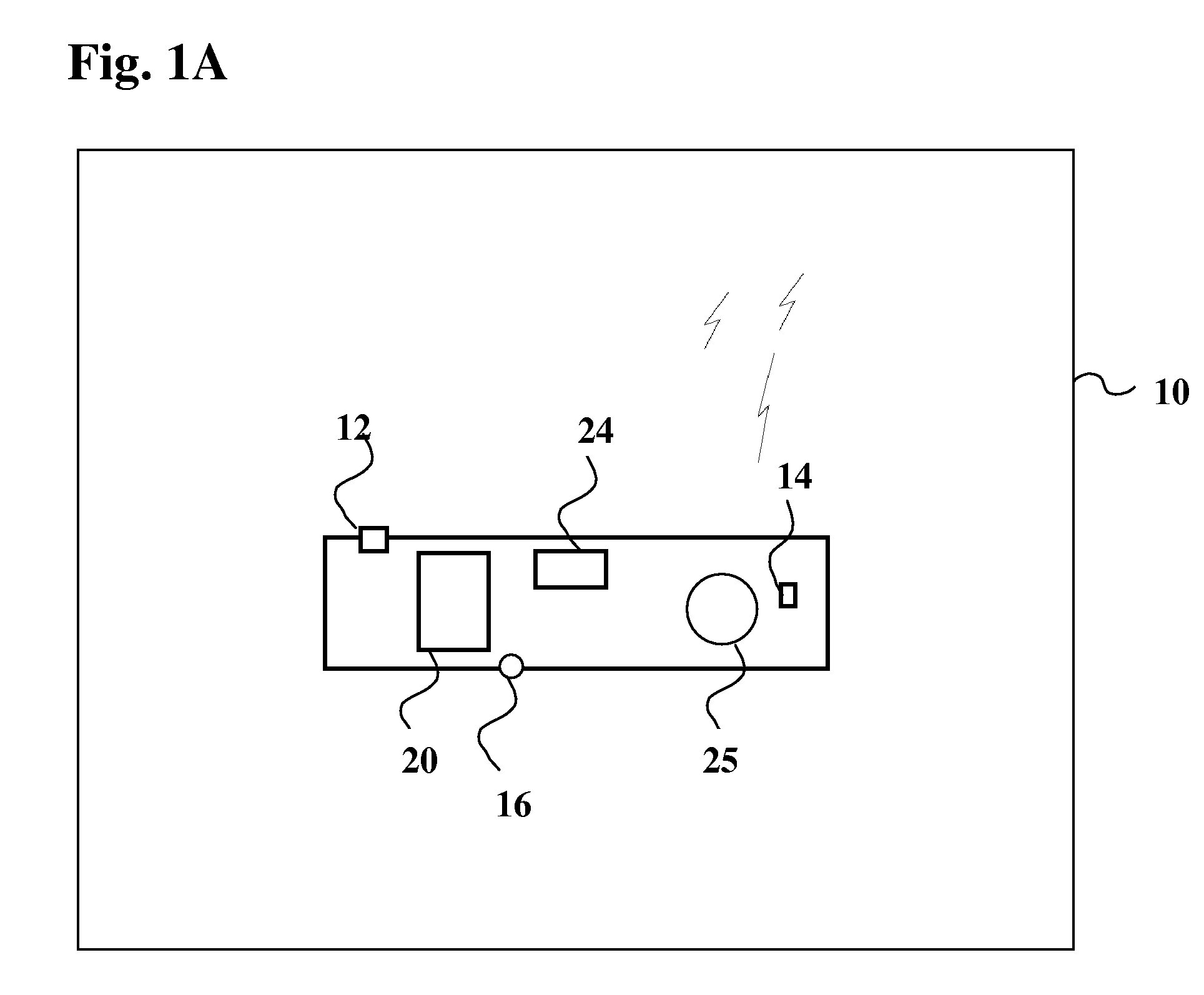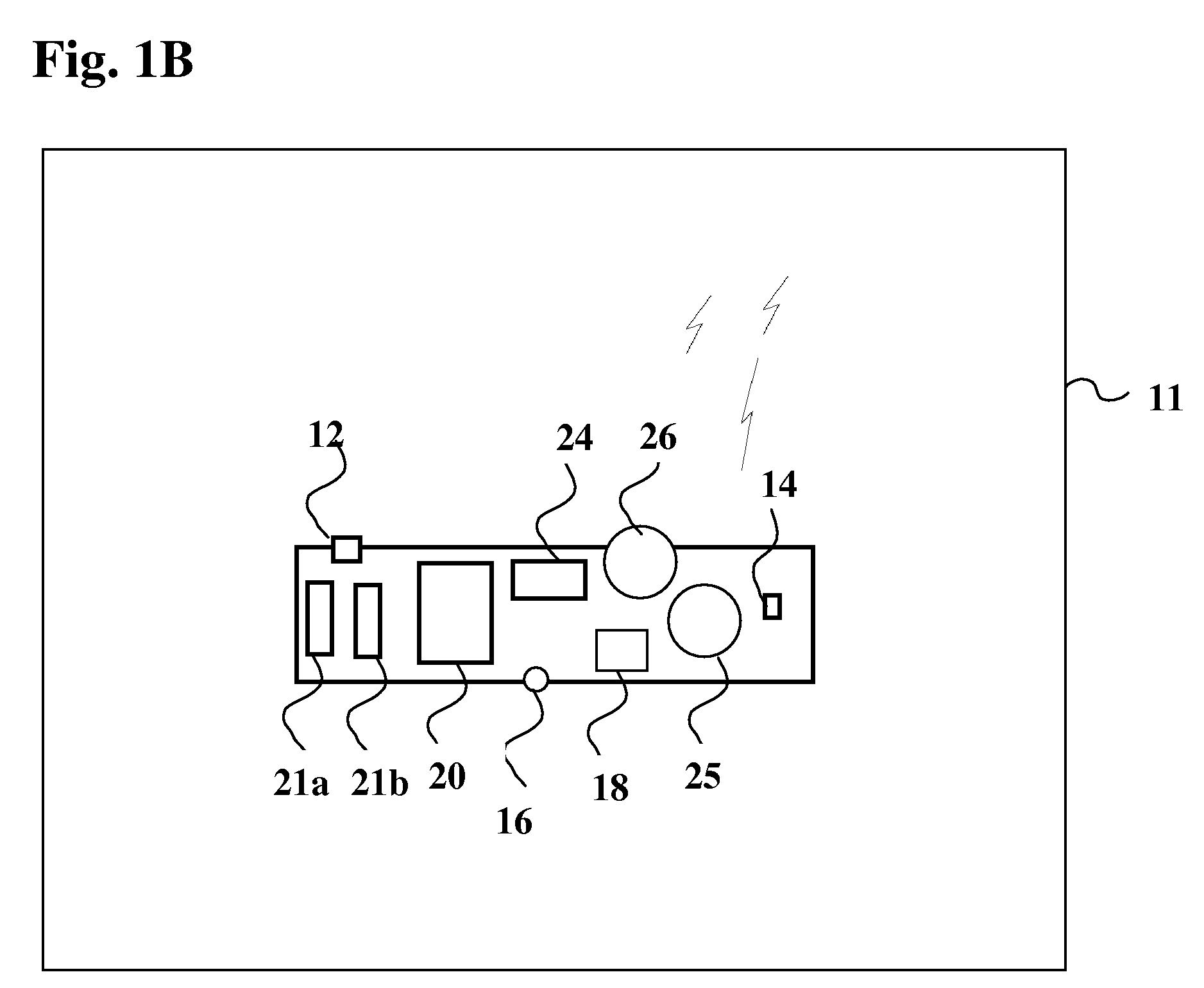This method does not allow users to quickly recover their lost devices.
These methods do not allow users to automatically and / or instantaneously recover their lost devices.
So, if the PED is already removed from its retaining device for use or the retaining device and PED are left behind together or move out of a desired range, this apparatus does not protect users from losing their PEDS.
This
system is unreliable and unfit for use as a proximity alarm because
paging consumes 40 mA, a rate that would inconvenience the user by requiring an expensive and / or heavy battery or frequent recharging.
Further,
paging is often blocked by human bodies, which can result in false alarms when a page does not reach the first device.
This system and method have been tested, and not found to a reliable way for indicating that a
mobile phone has left a proximity range due to production of false positives.
US
Patent application publication 20020080036 discloses the use of a mobile network for tracking the position of a plurality of objects and displaying them on a map; the apparatus in this patent requires expensive transceivers, and has a significant time
delay for indicating object is out of range.
The system is difficult to commercialize because of the large variety of batteries on the market.
Furthermore, the transmitter /
receiver system needs an antenna, and it would be a challenge to install an antenna inside the battery or on its surface as that would compromise its performance.
It requires a bulky transceiver that interrogates all the RFID tags.
It is not convenient for portable applications inter alia.
This system cannot be used with existing phones and requires
cell phone manufacturers to modify their designs.
However, these systems are passive and require that someone monitor the receiver in order to respond to any needs of the child or to detect that the child has left the detection range of the audio and / or video transmitter.
Further, such systems require considerable power input and are unwieldy in size.
These systems do not provide for monitoring a mobile target of interest, such as child or pet, and do not automatically provide notice when the target of interest goes out of a desired range.
A more complicated system is used for monitoring of people confined to home detention.
Since convenience and ease of use of the person being monitored have not been a primary consideration, the systems are unwieldy, large, and heavy, and further these systems are designed for monitoring from a long distance and take
advantage of the large law
enforcement communications networks and personnel.
Expenditure of such resources would not be practical for loss of a
cell phone or other PED, or for a dog or child that simply has wandered a little further than desired.
GPS and other components add weight, size, complexity and expense to such a
monitoring system, yet such post-loss detection systems don't address the problem of monitoring the child in real time and preventing the child from leaving the desired area.
However, such an analog
RF system is capable of being undermined by other interfering devices.
While the manufacturer may vary the
signal frequency used by different pairs of transmitters and receivers, it is possible for a receiver in a first pair to detect a transmitter from a second pair, thus risking the possibility that the first receiver would not detect the first transmitter going out of range, which could not only mean that a child being monitored goes out of range without an alarm but that the parents would have a false sense of security that the child was within range and so consequently they do not look after the child as much they may otherwise have without the system.
Further, when a transmitter or receiver is lost, it is not likely that a replacement can be readily obtained that has a matching
fixed frequency transmission or reception range, despite the possibility of an interfering transmitter being encountered at random in use.
The lack of security on these RF type transmitter receiver pairs means that a child or pet abductor can monitor the frequency of a first transmitter and program a second transmitter that can be used as a
decoy to defeat the system.
These systems can cause harm to the child by forcing it to loose its balance, can annoy the parents, and the leash gives a demeaning appearance to the parent and child.
The system also does not promote independent movement for the child and the associated physiomotor and psychological independence.
 Login to View More
Login to View More  Login to View More
Login to View More 


